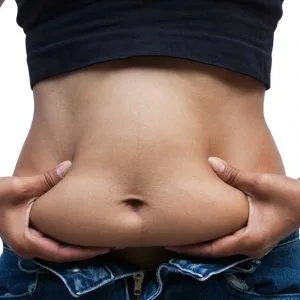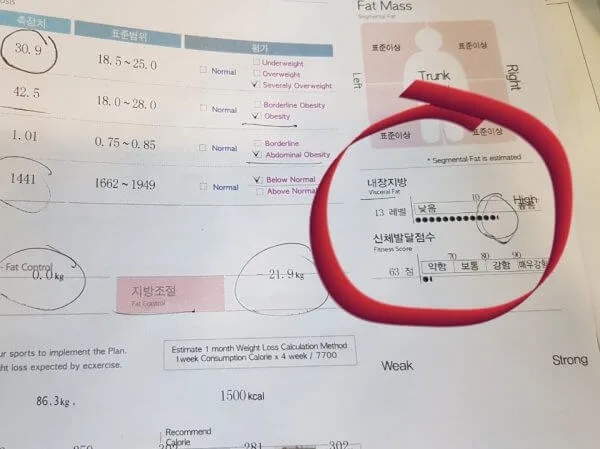揭开内脏肥胖的神秘面纱:为什么手术还不够
内脏肥胖,也称为向心性肥胖,是脂肪在腹腔中积聚的一种疾病,围绕着肝脏、胰腺和肠道等重要的内脏器官。这种类型的脂肪不同于皮下脂肪,皮下脂肪位于皮肤下方。虽然皮下脂肪可以通过吸脂或腹部除皱等手术来靶向,但内脏脂肪位于体内更深处,无法通过手术去除 (SpringerLink)。

为什么内脏肥胖很危险?
Visceral fat isn’t just a passive layer of storage. It’s metabolically active and releases hormones and chemicals that can interfere with your body’s normal functions. High levels of visceral fat are linked to an increased risk of serious health problems, such as:
- Heart Disease: Visceral fat contributes to inflammation and can lead to the buildup of plaque in your arteries, increasing the risk of heart attack and stroke (SpringerLink).
- Type 2 Diabetes: It’s associated with insulin resistance, making it harder for your body to regulate blood sugar levels.
- High Blood Pressure: Excess visceral fat puts more strain on your cardiovascular system, raising blood pressure.
- Fatty Liver Disease: The fat surrounding the liver can lead to its dysfunction and even liver scarring (cirrhosis) over time.
为什么手术不能去除内脏脂肪?
吸脂术和腹部除皱术等手术旨在去除位于皮肤下方的皮下脂肪。然而,内脏脂肪储存在腹腔深处,围绕着重要器官,使其无法通过手术进入。此外,一些研究表明,如果不与定期体育活动相结合,吸脂可能会导致内脏脂肪的代偿性增加(牛津学术)。
吸脂和腹部除皱术在解决肥胖问题中的作用
While it’s true that liposuction or tummy tuck cannot eliminate visceral fat, they can still play an important role for patients struggling with obesity. People with severe visceral obesity often have a low basal metabolic rate and may find it difficult to achieve significant results from diet and exercise alone. In fact, studies suggest that the success rate for weight loss through lifestyle changes is less than 8% for individuals with obesity.
By removing external fat through procedures like liposuction or tummy tuck, patients can experience a dramatic improvement in their appearance, which can serve as a powerful motivation to adopt healthier habits. This renewed sense of motivation often increases the likelihood of overcoming obesity and maintaining long-term weight management.
如何判断您是否患有内脏肥胖症?
Unlike subcutaneous fat, visceral fat isn’t visible from the outside. However, a large waistline can be an indicator. For most people, a waist circumference of more than 35 inches (88 cm) for women and 40 inches (102 cm) for men suggests an unhealthy amount of visceral fat. Body mass index (BMI) can also provide a clue, but it doesn’t distinguish between fat types.
The most accurate way to measure visceral fat is through imaging techniques like CT scans or MRI, but these aren’t commonly used due to their cost and complexity. Instead, doctors may assess risk factors like waist-to-hip ratio and overall lifestyle.
什么原因导致内脏肥胖?
Several factors contribute to the buildup of visceral fat:
- Unhealthy Diet: High consumption of sugary, processed foods and trans fats.
- Lack of Exercise: Sedentary lifestyles make it harder to burn calories and fat.
- Stress: High stress levels can lead to hormonal imbalances, particularly increased cortisol, which promotes fat storage in the abdominal area.
- Genetics: Some people are predisposed to store fat in the abdominal region.
- Aging: As we age, our metabolism slows down, and hormonal changes can lead to fat redistribution.

如何减少内脏脂肪?
The good news is that visceral fat responds well to lifestyle changes. Here are some effective strategies:
- Healthy Eating: Focus on a balanced diet rich in fruits, vegetables, lean proteins, whole grains, and healthy fats. Avoid added sugars, refined carbs, and processed foods.
- Regular Exercise: Aim for at least 150 minutes of moderate aerobic activity or 75 minutes of vigorous exercise per week, combined with strength training.
- Stress Management: Practice relaxation techniques such as meditation, yoga, or deep breathing exercises.
- Adequate Sleep: Poor sleep can disrupt hormones that regulate appetite and fat storage. Aim for 7-9 hours of quality sleep each night.
- Limit Alcohol Consumption: Excess alcohol intake can contribute to weight gain, particularly around the abdomen.
解决内脏肥胖的医疗选择
While lifestyle changes are the foundation for reducing visceral fat, additional medical interventions may be necessary for some individuals. Options include:
- Medications and Injections: Prescription medications or injectable treatments like GLP-1 medications have shown effectiveness in reducing visceral adipose tissue (PLOS ONE).
- Behavioral Therapy: Addressing emotional and psychological factors through counseling or therapy can help individuals overcome barriers to weight loss.
- Bariatric Surgery: For those with severe obesity and associated health risks, bariatric surgery, such as gastric bypass or sleeve gastrectomy, may be considered as a last resort to achieve significant weight reduction.



Leave A Comment
You must be logged in to post a comment.